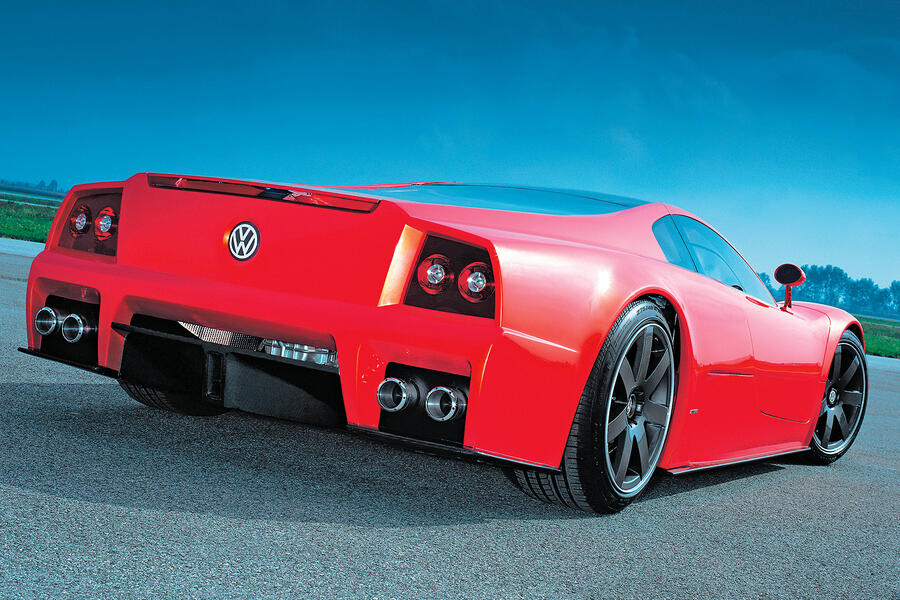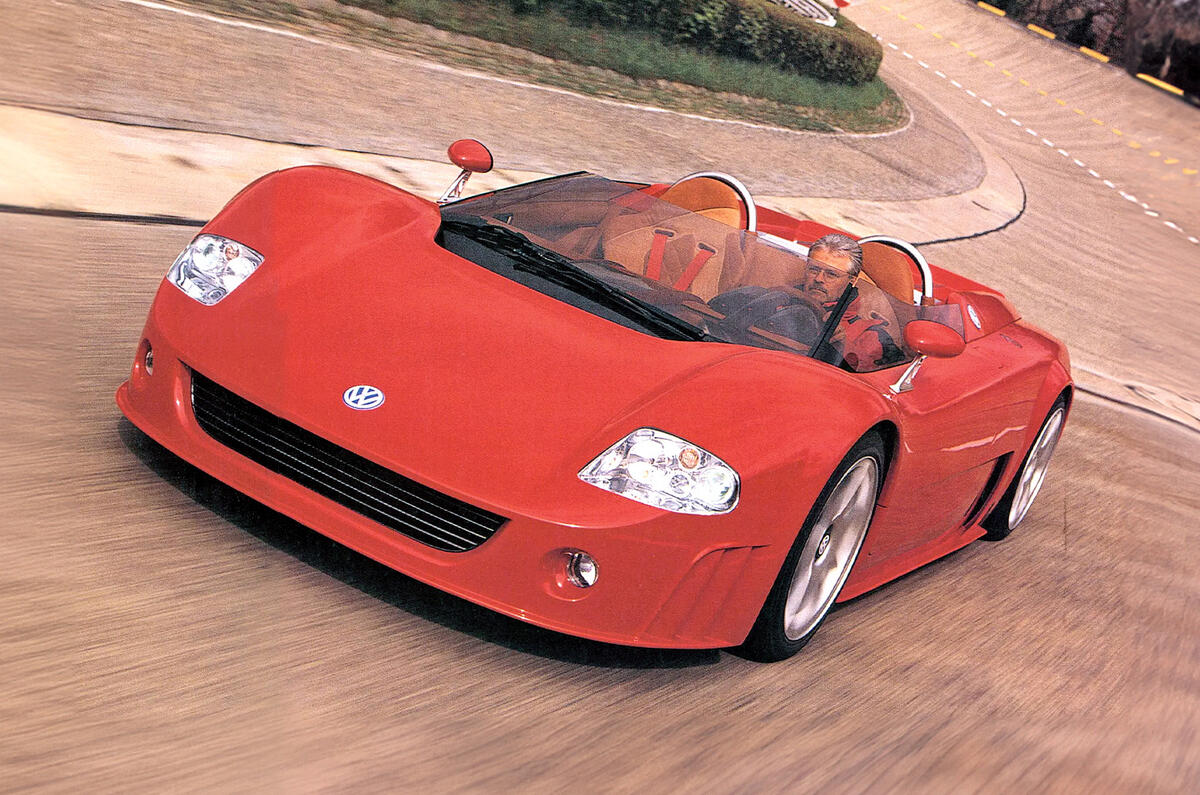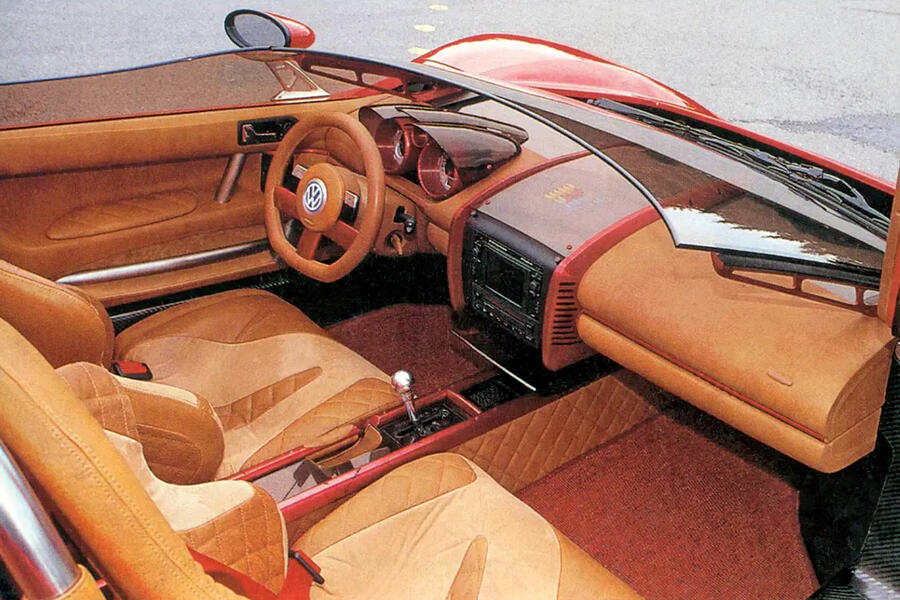The new Bugatti Mistral is an open-air take on the Chiron – and the very last model to carry the four-turbo W16 engine that had its debut in the Veyron back in 2005.
The Mistral’s pedigree can be traced back further than the Veyron, though. In 1998, the year Volkswagen bought Bugatti (as well as Bentley, Cosworth and Lamborghini, Ferdinand Piëch being on the acquisitional rampage), the company unveiled a sensational roadster at the Geneva show.
Though neither we nor VW knew it at the time, this car was laying the groundwork for future Bugatti roadsters. The engine had a short, W-layout (the block was just 510mm long) and was exposed to the elements amidships.
The cockpit was luxurious by supercar standards, and practical to the extent that two golf bags could fit in the boot.
Top speed mattered more than handling. And but for the jutting roll hoops, the long-tail silhouette and face were elegantly uncomplicated. It was called the W12.

Volkswagen had previously shown a coupé, but we didn’t get to drive the tintop, whereas just six weeks on from Geneva, Autocar special correspondent Bern Ostmann was in Germany to try the roadster.
VW was intending to put these cars into production, and within just two years (the impetuous hand of Piëch again), so it was key the car was seen as a credible rival to Ferrari. Ostmann described this car being a Volkswagen as “unbelievable”.
It’s understandable. The engine was a 5.6-litre W12 – two VR6 units melded – that made 420bhp and 391lb ft but was to be capable of 700bhp in race trim.
Which race? Le Mans. Wanting to make the ultimate statement, VW’s intent was to beat the Mercedes CLK GTR and Porsche’s GT1. Launch-spec road cars would make 500bhp, pushing against just 1380kg, thanks to the Italdesign-styled Kevlar bodywork.









Join the debate
Add your comment
some pretty lazy journalism. The W16 engine was created by Bentley/VW in 1999 for the Bentley Hunaudières concept. It was later used in the Audi Rosemeyer concept in 2000. At the time, Bugatti was going to be the luxury saloon/sedan and Bentley was going to be sportcars. VW then decided Bentley would be luxury and Bugatti would be sportcars.
The Audi Rosemeyer and VW W12 eventually became the Audi R8 (dropping the W16 in favour of a lighter, cheaper engine), while the W12 engine went to VW for the Phaeton which in turn went to Bentley for the Continental. The Hunaudières became the Veyron
Interesting history! It’s wild how engine designs evolve across brands. Speaking of evolution, it reminds me of Monkey Mart—always adapting to deliver the best. The W16’s journey from concept to Veyron is a testament to innovation, much like how small ideas can grow into something amazing!
Interesting history! It’s wild how engine designs evolve across brands. Speaking of evolution, it reminds me of Monkey Mart—always adapting to deliver the best. The W16’s journey from concept to Veyron is a testament to innovation, much like how small ideas can grow into something amazing!